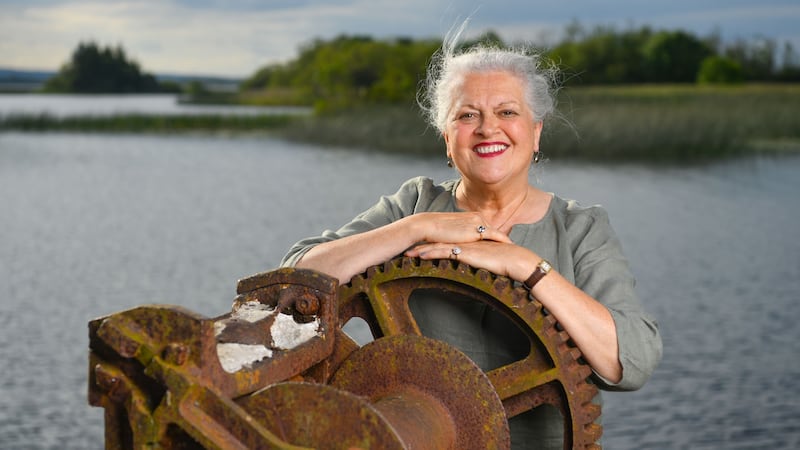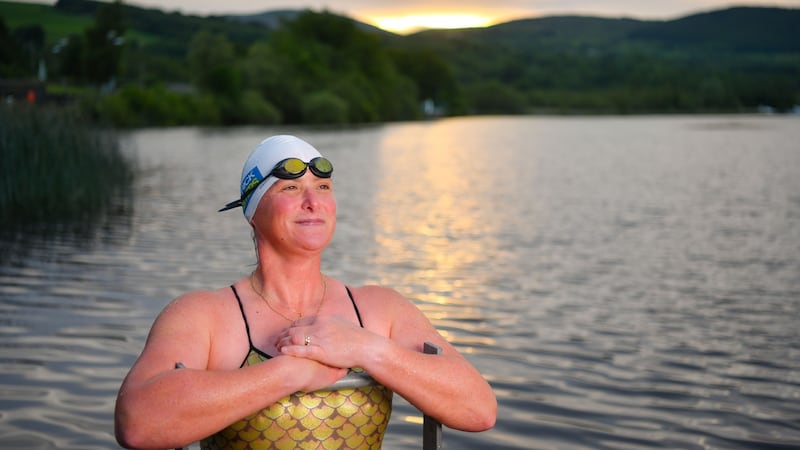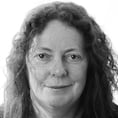Rosie Foley calls Lough Derg "she" throughout our conversation, as if Ireland's third-biggest lake has sentient qualities. Foley, a teacher in St Anne's Community School in Killaloe, Co Clare, is one of many living on, or close to, Lough Derg's shoreline who consider themselves "lake people".
Their lives have been in some way shaped by the body of water they live alongside. They are united by the lake at their centre, rather than fragmented into the county boundaries of Clare, Tipperary and Galway that separate them.
Foley’s parents, Brendan and Sheila, first met on Lough Derg, back in the 1970s. “They happened to be on the same tour boat.”
When Foley was seven the family moved to Killaloe, where her father bought a pub. (Her brother Anthony was the former Ireland rugby international and Munster coach who died suddenly in 2016.) The family always had a boat which they took out frequently on the lake.
The ever-growing communities of Killaloe and Ballina villages lie at opposite sides of a striking stone bridge of 13 arches; a protected structure. They are, respectively, in counties Clare and Tipperary. Depending on which side of the bridge you are on, the order of the village's names switch. On the Clare side, you are in Killaloe-Ballina. On the Tipperary side, you are in Ballina-Killaloe.
People used to ring up from Zurich to book the restaurant. They'd fly into Shannon the next day, get a minibus to Portumna, get their cruiser and come to us for dinner
It is 39.3km from one end of the lake at Portumna to the other. Nobody knows this statistic more intimately than Foley, because she has swum the entire length of Lough Derg; the first such recorded feat.
“Our parents wanted us to learn to swim when we moved here,” she says. She was told she could have a toy of her choice if she learned to swim. So Foley fixed her eye on a rag doll with a blue dress and yellow hair. Then she went to the shallow end of the outdoor pool in Ballina and taught herself.
On Midsummer’s Day in 2014, Foley swam the 22,211 strokes it took her to cross the lake, end from end. It took 13 hours, 10 minutes, and was a training swim for an attempt at the English Channel. Foley went on to successfully swim the channel that same summer.
“I very much enjoyed every moment,” she says. “The lake has always been my go-to place, where I am safe, and can relax. She is a little bit moody, but generally very forgiving.”
Mindful
We are talking in the lovely 57-room Lakeside Hotel in Ballina-Killaloe, which is managed by Eoin Little. He’s been there 15 years. “I understand what spirituality is, but I never feel it,” he says. “But the lake makes me feel mindful. Every time I look at it, I feel as if I am in the moment.”
I ask Little what length the perimeter of the lake is.
“90 kilometres? 110 kilometres?”
He’s flabbergasted to hear that Lough Derg’s official website measures its shoreline at 179km. We wonder if that means the actual road length around the lake, or the geographical shoreline. Later, as I drive around the lake, I lose track of time, and forget to check my odometer. All I know is, whether it’s 110 or 179km, it takes me several hours to circuit the lake.
There’s a lovely, much-used 16km path and cycleway that leads from Killaloe-Ballina to Scarriff. It passes by Two-Mile-Gate Park, where there are huge inflatable slides in the water for the summer amusement of all.
I stop in Tuamgraney, the birthplace of Edna O'Brien – a tiny village with a wide main street and St Cronan's church, supposedly the oldest church in constant use in Ireland. I have a distinct memory of reports of a plaque being placed at the entrance to the house where O'Brien grew up, and so I go looking for it.
I stop in to the East Clare Trading Post cafe and shop, opposite McKernan’s Woollen Mills, to seek directions.
“I’m just wondering if you can tell me where Edna O’Brien’s house is? I’m trying to find the plaque to her.”

The young woman behind the counter stares blankly back. “Who?”
“Edna O’Brien. She’s from here. A writer. The Country Girls?”
“Never heard of her.”
The young woman’s colleague, who says she lives in Tuamgraney, comes over to see what’s going on. I repeat my question, and add, “She lives in London now.”
“Never heard that name.” The name of Tuamgraney’s most famous former resident is definitely not recognised in its local cafe.
“My curiosity has got to me now,” says the second woman, who goes outside to ask her husband, having a coffee, if he knows whom I’m talking about.
“Oh yes,” he says. “She wrote lots of books, very well known.”
“I’m wondering where the plaque is,” I say. “Where her house is.”
“Plaque?” says the man, looking baffled. “I don’t know anything about a plaque.”
At that point, I consult Google Maps. The plaque at the entrance to Drewsborough House which marks it as being the birthplace of Enda O'Brien, with the quote "Tuamgraney, home of my home and fount of my fictions", is only a couple of hundred metres away. From it I can see the East Clare Trading Post: evidence of the truism that we often don't know what is on our own doorsteps.
Wild venison
In a house on a hill a mile from Scarriff, Eamonn Giblin is looking out over his view of the lake, his spaniel Tina darting in and out of the room. Giblin has a business, Gourmet Game, selling game he sources from private estate shoots. “I supply the five-star hotels, like Ashford Castle and Dromoland, with wild venison and pheasant and rabbit.”
The walls of the room are dominated by enormous stuffed trouts in glass cases – 7lb, 5½lb, each one with a story of an epic catch. Giblin, a dedicated fisherman, has lived in the locality all his life. It was his father, Tommy, who taught him how to fish.
Our focus is on the lake, not the land. Everyone has such respect for the lake. It will always be here, but we are only passing through
“In 1968, when I was seven, my brother Pádraig and myself were out with my father fishing. It was May.” The small brothers got hungrier and hungrier, but they had to wait in the boat watching while their father spent three hours reeling in a whopping 9lb 4oz trout, the biggest caught in Lough Derg for years. It led to a lifetime’s love of fishing for Giblin, who, like many on the lake, has his own boat.
“It never grows old, being out on the water,” he says. “It’s sacred out there, and I don’t mean sacred because of Holy Island [an island on the lake where there are monastic ruins]. We all know each other – the fishing community, the sailing community. Our focus is on the lake, not the land. Everyone has such respect for the lake. It will always be here, but we are only passing through.”
At Mountshannon’s Community Enterprise Hub, Fiona Coady is finishing work for the day. Ireland’s first Steiner school is at Raheen Wood, and Coady helps provide support for the wider Steiner network in Ireland. “The Steiner ethos is that you educate the child hands, head and heart,” she explains. Her own two children, aged 10 and five, attend the school.

She talks about “the lake community” of Lough Derg; of how it “exists independently of the land”. What Coady is really talking about is a state of mind.
“I can be in my house and look over the lake and not even be present to what is going on around me. Then when you untether the rope of your boat from the land, and go onto the lake, time slows down,” she says. “It makes me feel connected to the past. The lake is an endless resource of beauty and nature, and it demands and requires the utmost respect. When the lake floods, it comes up to our gate, and lets us know who is in charge.”
Her husband, who grew up locally, and was always on boats, introduced Coady to the lake rallies, where everybody meets up.
“It’s a week-long annual event in the summer. About 60 boats barges, cruisers, yachts meet in one harbour on a Monday night, and everyone moves on together to the next place around the lake. There are games, parties, barbecues, and then a big dance at the end. We always pick a harbour with a hotel for the last night, and have dinner and an awards ceremony.”
Holy Island
But as well as Coady knows Lough Derg, there is still one place she hasn’t been to. “Would you believe, I have never been to Holy Island. But my kids have been – on a school tour.”
One of Anne Gernon's first memories was of hearing Irish music emanating ghost-like from the lake near her home at Kilgarvan Quay. "It was the St Brendan boat, that used to take people up the lake. We'd know when it was getting near, because we'd start to hear the music."
In the 1980s, when there was still grass growing down the middle of their road, Gernon’s mother Nancy opened a small restaurant at Kilgarvan Quay, and called it Brocka on the Water. It initially seated 16, then 32. “There were German and Swiss tourists coming through, and nowhere for them to eat.”
The Gernons converted a grain loft into a restaurant. “It’s where people stored grain before it was collected by the Guinness barges, and brought to Dublin. We found a winnowing machine here when we were converting the loft.”
The crane mechanism that lifted the containers of grain from the pier at Kilgarvan to the barges is still in situ, now rusted, but a reminder of the lake’s economic past and a time when water, not motorways, was a method of transport.
I have been on every island. I know every bit of it. Some days, when I am driving along the lake, I just want to get out of my car, and get into my own boat and be back on the water again
Most of the early guests to Brocka were European tourists. “Irish people hadn’t embraced the idea of going out for dinner.” Gernon trained as a chef and joined her mother in the restaurant. Word spread among the lake’s summer cruising community. “People used to ring up from Zurich to book the restaurant. They’d fly into Shannon the next day, get a minibus to Portumna, get their cruiser and come to us for dinner. Even getting a phone call from Switzerland or Germany in those days was so exotic.”
There are many very large Georgian and Victorian former fishing lodges secreted around Lough Derg, several still in private ownership. One is Gurthalougha House, a 100-acre lakefront estate, near Ballinderry. In 1998, it was bought by the American tycoon John Paul Getty III, who lived there for several years.
Getty, whose grandfather was once the richest man in the world, had been kidnapped at the age of 16 and held for ransom. When none was forthcoming, one of his ears was dispatched, along with a message, “He will arrive in little bits”, and his family paid up. After his release, Getty went on to become addicted to drugs, and had a life-changing stroke. He came to live in Ireland, in rural Lough Derg, with a staff of 20 to attend to him.
“He and his entourage were frequent guests for dinner. He spent his 40th birthday here,” Gernon recalls. The Gernons attended fabulous Christmas parties at Gurthalougha, which has since been sold to another owner. Getty died in 2011.
Gernon walks down to Kilgarvan Quay every day to look out over the lake. “I love looking at the water. It makes me calm.” Brocka on the Water won’t be reopening as a restaurant again post-pandemic, but Gernon has plans to do “something else” in the food area.
Elusive number
I ask everyone I meet how many islands are on the lake. Rosie Foley says 30. Eoin Little says 365. Eamonn Giblin says he doesn’t know. Fiona Coady says 10. Anne Gernon says 15. The number is elusive, like the perimeter length of the lake.
To drive around Lough Derg is to be continually distracted by the many brown signs that point to holy wells, churches, quays. The road is narrow and winding and the lake appears and disappears to my right, glinting and gleaming. The names of the villages are a lovely litany: Ogonnelloe, Whitegate, Terryglass, Kilgarvan. Dromineer, Garrykennedy, Portroe.
After Kilgarvan, I follow one of the brown signs down to another quay, in search of a possible place to swim. I stop at the ruin of Kilbarron Abbey, an atmospheric place where ancient headstones are tilting into a green sward. One particularly unusual headstone catches my eye, and I lean down to examine it.
The carvings are faint, but I manage to make out the date, 1810, and the epitaph. “Lived Beloved. Died Lamented.” Four beautifully poignant words that sum up a life lived more than two centuries ago. I get into my car again and drive off, the words resounding in my head.

The last thing I do before leaving Lough Derg is to go out on the lake itself with James Whelan in his boat, Spirit of Killaloe, which can seat 80.
“This is my 31st season on the water,” he says. “I started when I was 14.” The first small boat Whelan worked on took four people plus him – a 19-footer. It was £7 per passenger, and the teenage entrepreneur both narrated the history of the lake, and also managed the boat.
“About the fourth passenger I had handed me £10,” he recalls. The tip made him determined to keep taking tourists out on the lake. In time, he bought his own boat, and then another, and has made his living taking people out on the lake ever since. “I have been on every island. I know every bit of it. Some days, when I am driving along the lake, I just want to get out of my car, and get into my own boat and be back on the water again. I will never tire of it. It is so peaceful and tranquil.”
He recalls that in the 1970s, CIÉ, as they were then, owned two boats, St Brendan and St Kieran. (The rail line closed in 1944, and the station building on the lake is now a private home.) “The St Brendan did a four-hour trip on the lake, with food and live entertainment.” It was the sound of this live music that Anne Gernon heard from her home at the other end of the lake.
It’s beautiful out there on the waters of Lough Derg, looking at the fancy houses right on the lake, with their own little jetties, and at the woods that are alive with unseen deer. I don’t know if we are in Clare, or Tipperary, or Galway. It doesn’t matter. We are simply on the lake.



















